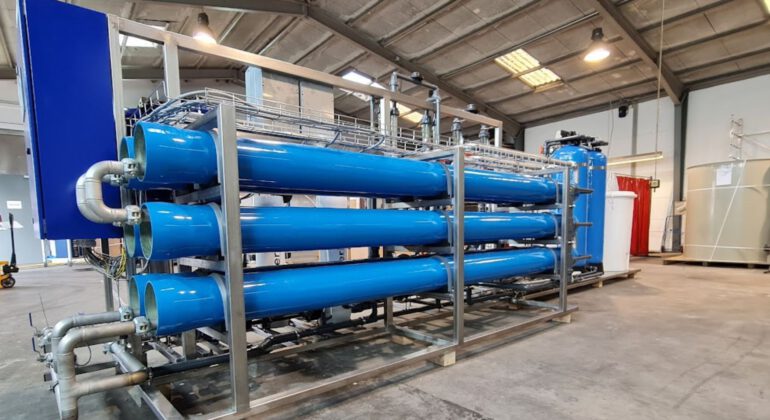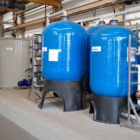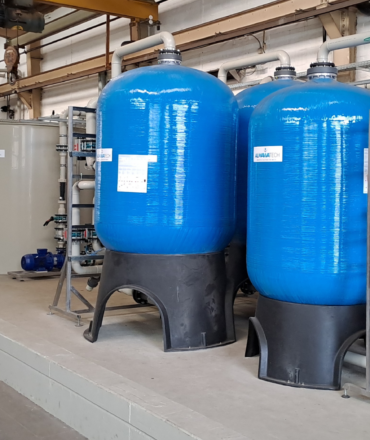As engineers for industrial wastewater treatment plants, we are often confronted with complex chemical challenges. One of the most problematic substances in the planning and operation of reverse osmosis systems is silicon, particularly in the form of silicon dioxide (SiO₂) or silica (H₄SiO₄). These compounds occur in various forms and concentrations in raw and process water and can cause significant problems in water treatment.
Table of contents
The problem of silicon and silicon compounds
Silicon is present in surface water, urban water, groundwater, process water and wastewater in various forms, including:
- Colloidal silicon dioxide: Finely dispersed particles that are difficult to separate and lead to blocking of the membrane surface.
- Dissolved silicic acid: This can form poorly soluble silicates, which can chemically precipitate at the concentration in reverse osmosis.
- Complexed silicon compounds: In combination with other ions such as calcium or magnesium, poorly soluble silicates are formed, which are deposited on membranes under certain conditions.
- Polymerized silicon: In higher concentrations and with pH fluctuations, silicon can polymerize, which makes removal even more difficult.
Origin of silicon in wastewater and process water
The concentration and form of silicon in water depends greatly on the origin of the water:
- Groundwater: Often contains dissolved silicic acid, which enters the water through contact with silicate-rich rocks such as quartz.
- Surface water: May contain both colloidal and dissolved silica, especially in regions with high mineral input.
- Industrial wastewater: Processes such as glass production, electronics manufacturing or chemical production often lead to increased silicon concentrations. Residues from cleaning processes and chemical treatments are particularly critical.
- Cooling and rinsing water: Silicon from groundwater, river water or city water accumulates here through evaporation and recycling processes.
Why is silicon so problematic?
The precipitation of silicon compounds is highly dependent on specific conditions such as pH value, temperature and ionic strength. This makes it difficult to define an exact precipitation limit. In addition, different silicon compounds can form a variety of precipitation products, including
- Amorphous silicates
- Crystalline deposits such as quartz
- Complex mixed products with calcium, magnesium or aluminum
These deposits are extremely stubborn and chemically stable, making them difficult to remove.
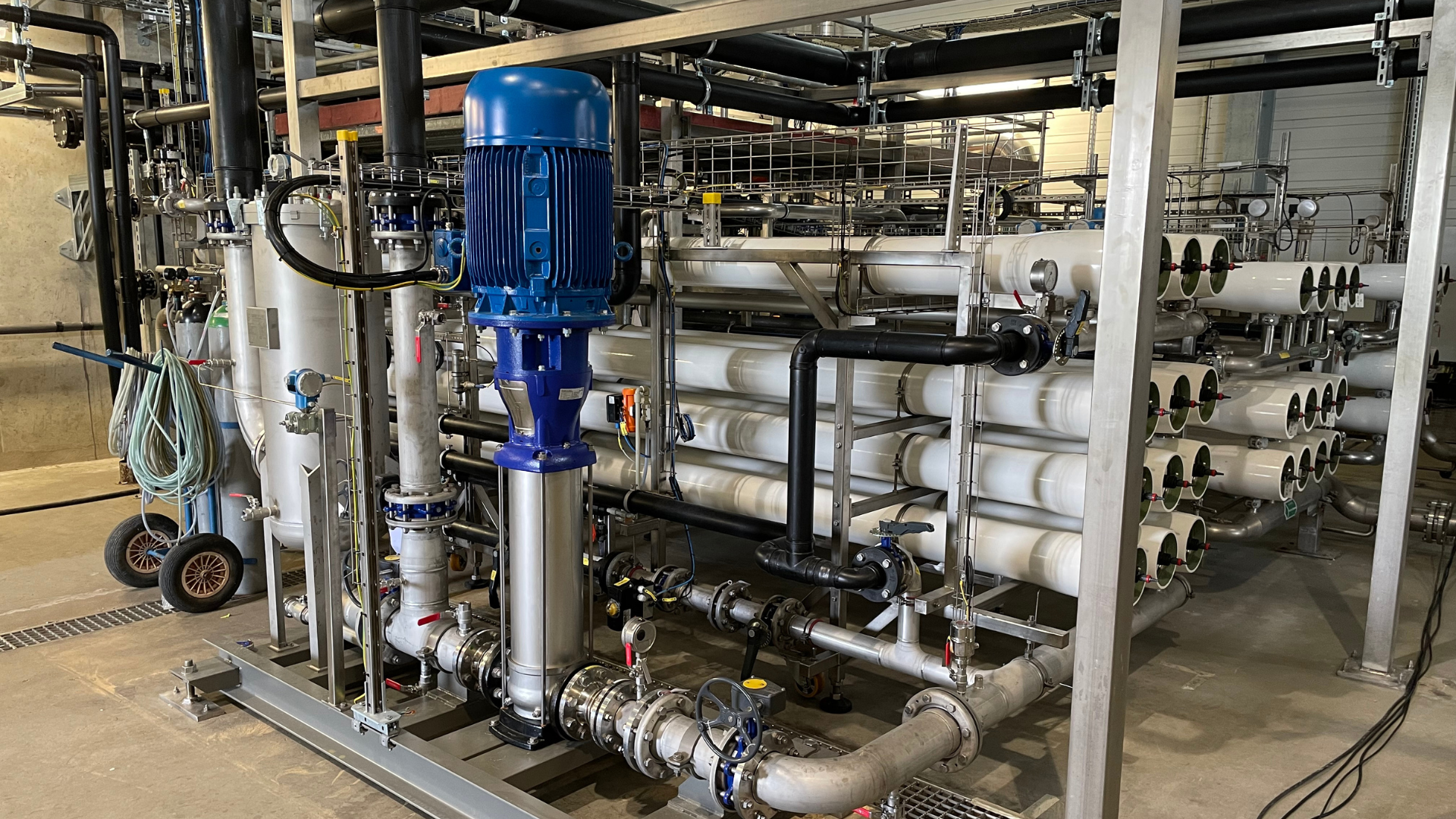
Photo: Our ALMA OSMO Process reverse osmosis system for the production of process water from wastewater (water recycling)
Effects of silicon on reverse osmosis systems
The concentration of silicon present can have a negative effect on the operation of a reverse osmosis system in various ways:
1. scaling (deposits)
Silicon can form insoluble silicates at high concentrations or unfavorable pH values. These are deposited on the membrane surface and reduce the water flow (flux) as well as the salt retention rate. This is particularly critical in the treatment of brackish or seawater, where silicon concentrations are higher.
2. damage to the membrane structure
Once silicon compounds have precipitated, they can not only impair the filtration performance of the membrane, but also cause mechanical damage. The deposits act as a barrier that impairs the operation of the membrane and leads to pressure losses.
3. increased operating costs
Deposits lead to a higher pressure loss across the membrane modules. This requires more energy to achieve the desired permeate output. In addition, frequent chemical cleaning (CIP) increases operating costs.
4. unpredictable problems due to complex connections
The large number of possible silicon compounds and their behavior in water make it difficult to predict problems accurately. Scaling often occurs unexpectedly, which leads to unforeseen maintenance intervals and malfunctions.
Solutions to the silicon problem
The effective handling of silicon in reverse osmosis systems requires a combination of preventive and reactive measures. The following strategies have proven themselves in practice:
1. optimization of the pre-treatment
Pre-treatment of the raw water is crucial in order to remove or reduce silicon before reverse osmosis:
- Ultrafiltration (UF): Effective for removing colloidal silicon.
- Flocculation and sedimentation in CP systems: Chemical precipitants such as aluminum salts or ferric chloride can aggregate colloidal silicon into larger particles that are easier to separate.
- Ion exchangers: Ion exchangers can contribute to the reduction of dissolved silicon.
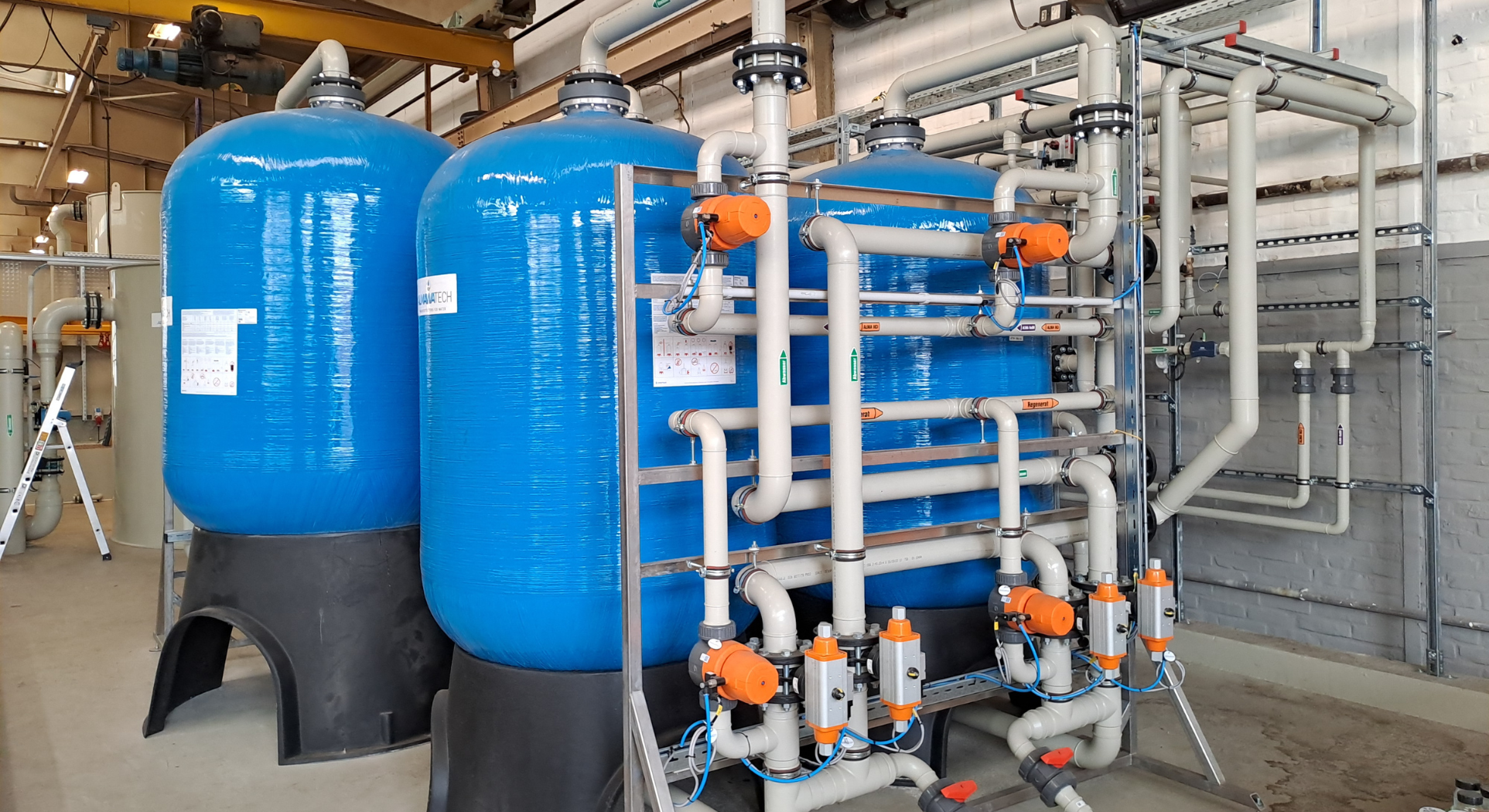
Photo: Our strongly basic ALMA ION anion exchangers for removing silicon dioxide with upstream ALMA FIL multilayer filters
2. antiscalants for silicon
Specially developed antiscalants can effectively inhibit the formation of silicate deposits. These chemicals bind to dissolved silicon compounds and prevent them from precipitating. Recent developments in this field show promising results in inhibiting even complex silicate compounds.
3. optimize operating parameters
Silicon deposits can be minimized by adjusting the operating conditions:
- Reduction of the recovery rate: A lower recovery rate reduces the concentration of silicon in the concentrate stream and thus the risk of scaling.
- pH control: A slightly acidic pH value can inhibit the precipitation of silicates.
- Temperature management: Controlling the operating temperature can reduce the tendency of silicon to polymerize.
4. regular cleaning (CIP)
An optimized cleaning-in-place (CIP) process is crucial for removing existing deposits and protecting the membranes from permanent damage. Highly alkaline cleaning agents or specially developed silicon solvents can be used for this purpose.
5. online monitoring
Modern sensor technology enables continuous monitoring of the silicon concentration in the feed and concentrate flow. This makes it possible to detect potential problems at an early stage and initiate countermeasures.
Importance of silicon control
The control of silicon in reverse osmosis systems is not only a technical issue, but also an economic and ecological one. Efficient measures for silicon reduction:
- Extend the service life of the membranes.
- Reduce operating costs through lower energy costs and lower chemical consumption.
- Contribute to the operational safety and efficiency of the entire system.
Conclusion
Silicon and its various compounds pose a significant challenge for the operation of reverse osmosis systems. The difficulty of defining clear precipitation limits makes sound planning and careful monitoring essential. However, with a well thought-out combination of pre-treatment, adapted operating parameters, antiscalants and modern monitoring, these problems can be successfully overcome.
For further information on our products, please feel free to contact us at any time!


